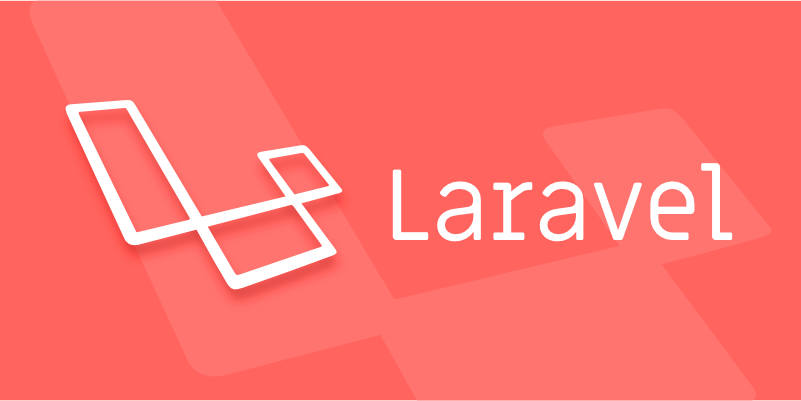 PHP Framework
PHP Framework
 Laravel
Laravel
 Explain Laravel's IoC Container binding methods (`bind`, `singleton`, `instance`).
Explain Laravel's IoC Container binding methods (`bind`, `singleton`, `instance`).
Explain Laravel's IoC Container binding methods (`bind`, `singleton`, `instance`).
Jul 15, 2025 am 12:56 AMThe difference between the three binding methods of bind, singleton and instance in Laravel's IoC container is that the instance creation and reuse methods are different. 1. bind creates a new instance every time it resolves, suitable for stateless services or short-term tasks; 2. singleton creates an instance only once during the entire request life cycle, suitable for global shared services such as database connections; 3. instance directly binds existing instances, suitable for testing environments or manually controls instance creation. These three methods correspond to different usage scenarios, and understanding their differences will help better manage dependencies and service life cycles.

Laravel's IoC container is one of the core mechanisms of the framework, which is responsible for managing the dependencies of classes and performing automatic injection. Among them, bind , singleton and instance are three commonly used binding methods, which determine how the container parses and returns an instance of a class. Let’s take a look at their respective functions and usage scenarios.

1. bind : basic binding, create a new instance every time you request
bind is the most basic binding method. When you register a class or interface through bind , the IoC container will create a new instance every time it is parsed.
$this->app->bind('Service', function ($app) {
return new Service();
});This method is suitable for service classes that do not require shared state . For example, you have a logger, and each call requires a new independent instance to process the log information of the current context.

?? Note: If you call
resolve('Service')in multiple places or inject through type prompts, you will get different instances.
2. singleton : singleton binding, create an instance only once
As the name suggests, singleton ensures that the class will only be instantiated once during the entire request life cycle, and all subsequent calls will return the same instance.

$this->app->singleton('Service', function ($app) {
return new Service();
});This is very useful when sharing state or resources are needed, such as database connection pools, configuration services, cache services, etc. You want these services to remain consistent throughout the entire application run.
? Tips: If you want a class to register as a singleton by default, you can implement
Illuminate\Contracts\Container\SingletonInterfaceinterface in this class.
3. instance : directly bind existing instances
Sometimes you already have a created object and want to hand it over to container management directly. At this time, you can use instance :
$service = new Service(); $this->app->instance('Service', $service);
In the future, no matter where Service is parsed, this pre-created $service instance will be returned.
This is common in the test environment, or you want to manually control the instance creation process (for example, using factory pattern or other initialization logic).
Several key differences in use
-
bind: Every time it is a new instance. -
singleton: There is only one instance in the entire life cycle. -
instance: Use the instance you provide directly.
| method | Whether to reuse instances | Applicable scenarios |
|---|---|---|
bind
|
no | Stateless service, short-term tasks |
singleton
|
yes | Global shared services and resource management |
instance
|
Yes (fixed) | Manual creation, testing, special requirements |
Basically that's it. Understanding the difference between these three binding methods can help you better manage dependencies and service life cycles in Laravel.
The above is the detailed content of Explain Laravel's IoC Container binding methods (`bind`, `singleton`, `instance`).. For more information, please follow other related articles on the PHP Chinese website!

Hot AI Tools

Undress AI Tool
Undress images for free

Undresser.AI Undress
AI-powered app for creating realistic nude photos

AI Clothes Remover
Online AI tool for removing clothes from photos.

Clothoff.io
AI clothes remover

Video Face Swap
Swap faces in any video effortlessly with our completely free AI face swap tool!

Hot Article

Hot Tools

Notepad++7.3.1
Easy-to-use and free code editor

SublimeText3 Chinese version
Chinese version, very easy to use

Zend Studio 13.0.1
Powerful PHP integrated development environment

Dreamweaver CS6
Visual web development tools

SublimeText3 Mac version
God-level code editing software (SublimeText3)
 Working with pivot tables in Laravel Many-to-Many relationships
Jul 07, 2025 am 01:06 AM
Working with pivot tables in Laravel Many-to-Many relationships
Jul 07, 2025 am 01:06 AM
ToworkeffectivelywithpivottablesinLaravel,firstaccesspivotdatausingwithPivot()orwithTimestamps(),thenupdateentrieswithupdateExistingPivot(),managerelationshipsviadetach()andsync(),andusecustompivotmodelswhenneeded.1.UsewithPivot()toincludespecificcol
 Sending different types of notifications with Laravel
Jul 06, 2025 am 12:52 AM
Sending different types of notifications with Laravel
Jul 06, 2025 am 12:52 AM
Laravelprovidesacleanandflexiblewaytosendnotificationsviamultiplechannelslikeemail,SMS,in-appalerts,andpushnotifications.Youdefinenotificationchannelsinthevia()methodofanotificationclass,andimplementspecificmethodsliketoMail(),toDatabase(),ortoVonage
 Understanding Dependency Injection in Laravel?
Jul 05, 2025 am 02:01 AM
Understanding Dependency Injection in Laravel?
Jul 05, 2025 am 02:01 AM
Dependency injection automatically handles class dependencies through service containers in Laravel without manual new objects. Its core is constructor injection and method injection, such as automatically passing in the Request instance in the controller. Laravel parses dependencies through type prompts and recursively creates the required objects. The binding interface and implementation can be used by the service provider to use the bind method, or singleton to bind a singleton. When using it, you need to ensure type prompts, avoid constructor complications, use context bindings with caution, and understand automatic parsing rules. Mastering these can improve code flexibility and maintenance.
 Strategies for optimizing Laravel application performance
Jul 09, 2025 am 03:00 AM
Strategies for optimizing Laravel application performance
Jul 09, 2025 am 03:00 AM
Laravel performance optimization can improve application efficiency through four core directions. 1. Use the cache mechanism to reduce duplicate queries, store infrequently changing data through Cache::remember() and other methods to reduce database access frequency; 2. Optimize database from the model to query statements, avoid N 1 queries, specifying field queries, adding indexes, paging processing and reading and writing separation, and reduce bottlenecks; 3. Use time-consuming operations such as email sending and file exporting to queue asynchronous processing, use Supervisor to manage workers and set up retry mechanisms; 4. Use middleware and service providers reasonably to avoid complex logic and unnecessary initialization code, and delay loading of services to improve startup efficiency.
 Managing database state for testing in Laravel
Jul 13, 2025 am 03:08 AM
Managing database state for testing in Laravel
Jul 13, 2025 am 03:08 AM
Methods to manage database state in Laravel tests include using RefreshDatabase, selective seeding of data, careful use of transactions, and manual cleaning if necessary. 1. Use RefreshDatabasetrait to automatically migrate the database structure to ensure that each test is based on a clean database; 2. Use specific seeds to fill the necessary data and generate dynamic data in combination with the model factory; 3. Use DatabaseTransactionstrait to roll back the test changes, but pay attention to its limitations; 4. Manually truncate the table or reseed the database when it cannot be automatically cleaned. These methods are flexibly selected according to the type of test and environment to ensure the reliability and efficiency of the test.
 Choosing between Laravel Sanctum and Passport for API authentication
Jul 14, 2025 am 02:35 AM
Choosing between Laravel Sanctum and Passport for API authentication
Jul 14, 2025 am 02:35 AM
LaravelSanctum is suitable for simple, lightweight API certifications such as SPA or mobile applications, while Passport is suitable for scenarios where full OAuth2 functionality is required. 1. Sanctum provides token-based authentication, suitable for first-party clients; 2. Passport supports complex processes such as authorization codes and client credentials, suitable for third-party developers to access; 3. Sanctum installation and configuration are simpler and maintenance costs are low; 4. Passport functions are comprehensive but configuration is complex, suitable for platforms that require fine permission control. When selecting, you should determine whether the OAuth2 feature is required based on the project requirements.
 Implementing Database Transactions in Laravel?
Jul 08, 2025 am 01:02 AM
Implementing Database Transactions in Laravel?
Jul 08, 2025 am 01:02 AM
Laravel simplifies database transaction processing with built-in support. 1. Use the DB::transaction() method to automatically commit or rollback operations to ensure data integrity; 2. Support nested transactions and implement them through savepoints, but it is usually recommended to use a single transaction wrapper to avoid complexity; 3. Provide manual control methods such as beginTransaction(), commit() and rollBack(), suitable for scenarios that require more flexible processing; 4. Best practices include keeping transactions short, only using them when necessary, testing failures, and recording rollback information. Rationally choosing transaction management methods can help improve application reliability and performance.
 Handling HTTP Requests and Responses in Laravel.
Jul 16, 2025 am 03:21 AM
Handling HTTP Requests and Responses in Laravel.
Jul 16, 2025 am 03:21 AM
The core of handling HTTP requests and responses in Laravel is to master the acquisition of request data, response return and file upload. 1. When receiving request data, you can inject the Request instance through type prompts and use input() or magic methods to obtain fields, and combine validate() or form request classes for verification; 2. Return response supports strings, views, JSON, responses with status codes and headers and redirect operations; 3. When processing file uploads, you need to use the file() method and store() to store files. Before uploading, you should verify the file type and size, and the storage path can be saved to the database.





